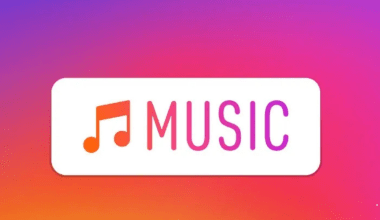Podcasts are more popular than ever. As a creator, hosting your podcast on Spotify is a great way to reach a global audience. With millions of active listeners, Spotify offers the perfect platform to share your voice, stories, and expertise. In this guide, we’ll teach you everything you need to know about how to create a podcast on Spotify, from planning your content to publishing it on the platform.
Why Choose Spotify for Podcasting?
Spotify has transformed from a music-streaming app into a hub for podcast creators and listeners. Here’s why you should consider Spotify:
- Massive Reach: Spotify’s extensive user base ensures your podcast gets maximum exposure.
- Free Hosting: Spotify for Podcasters provides free hosting for your episodes.
- Monetization Opportunities: Earn through ads, sponsorships, and listener support.
- Data Insights: Gain detailed analytics about your audience and performance.
Step 1: Planning Your Podcast
Before you learn how to create a podcast on Spotify, you need a solid plan. Here’s how to get started:
Choose a Podcast Topic
Pick a subject that you’re passionate about and resonates with your target audience. Popular categories include:
- True crime
- Personal development
- Technology
- Comedy
- Health and wellness
Define Your Target Audience
Understand who you’re speaking to. Are they students, professionals, or hobbyists? Knowing your audience helps tailor your content.
Create an Outline
Plan your episodes in advance. A typical outline includes:
- Introduction
- Key talking points
- Guest interviews (if any)
- Conclusion
Step 2: Gathering Equipment
Good-quality audio is crucial for a successful podcast. Here’s what you’ll need:
- Microphone: A USB or XLR microphone ensures clear sound. Popular options include Blue Yeti and Shure SM7B.
- Headphones: Use quality headphones like Audio-Technica ATH-M50x for monitoring.
- Recording Software: Software like Audacity (free) or Adobe Audition helps with recording and editing.
- Pop Filter: Reduces unwanted noise and ensures clean audio.
Step 3: Recording Your Podcast
Now that you have a plan and equipment, it’s time to record. Follow these tips for a professional outcome:
- Record in a quiet room to minimize background noise.
- Speak clearly and at a natural pace.
- Use software features like noise reduction and equalization to improve sound quality.
- Test your equipment before starting to avoid technical issues.
Step 4: Editing and Polishing Your Podcast
Editing is where your raw audio becomes a polished episode. Here’s how to do it:
- Trim unnecessary parts to keep your content engaging.
- Add background music or sound effects for a professional touch.
- Balance audio levels to ensure clarity.
- Export your episode in MP3 format, as it’s widely accepted by podcast platforms.
Step 5: Hosting Your Podcast
To publish your podcast on Spotify, you need a hosting platform. Here are some popular options:
- Spotify for Podcasters: Directly upload your podcast to Spotify for free.
- Anchor: Owned by Spotify, Anchor simplifies podcast hosting and distribution.
- Buzzsprout: A beginner-friendly platform with analytics tools.
Step 6: Publishing Your Podcast on Spotify
Once your podcast is hosted, here’s how to get it on Spotify:
- Create a Spotify for Podcasters Account
Sign up at Spotify for Podcasters. - Submit Your Podcast RSS Feed
Copy your RSS feed link from your hosting platform and paste it into Spotify’s submission form. - Verify Ownership
Confirm your email address to verify ownership of the podcast. - Add Podcast Details
Include a title, description, and cover art that captures your podcast’s essence. - Publish
Once approved, your podcast will be live on Spotify!
Step 7: Promoting Your Podcast
Publishing is just the beginning. Promotion is key to building your audience. Here’s how to promote your podcast:
- Social Media: Share episode updates and behind-the-scenes content.
- Collaborations: Appear as a guest on other podcasts.
- Email Marketing: Send updates to your subscribers.
- Engage with Listeners: Respond to comments and reviews.
Step 8: Monetizing Your Podcast
Spotify offers multiple ways to monetize your podcast:
- Ads: Use Spotify Ad Studio to insert advertisements into your episodes.
- Sponsorships: Partner with brands relevant to your audience.
- Listener Support: Encourage fans to support you through platforms like Patreon.
- Merchandise: Sell branded merchandise to your loyal listeners.
Tips for a Successful Podcast on Spotify
- Be Consistent: Release episodes regularly to build audience loyalty.
- Focus on Quality: High-quality content keeps listeners coming back.
- Leverage Analytics: Use Spotify’s analytics to understand your audience.
- Experiment: Try new formats, topics, or guest interviews to keep things fresh.
Conclusion: Your Podcasting Journey Awaits
Now that you know how to create a podcast on Spotify, it’s time to start your journey. With the right plan, tools, and dedication, you can create a podcast that resonates with listeners worldwide. Whether you’re sharing stories, insights, or humor, your voice has the power to make an impact. Start today and let Spotify amplify your reach.
For further reading, explore these related articles:
- Home Studio Setup: The Ultimate Guide for Music and Podcasts
- Spotify Gold: A Premium Experience for Music Lovers
For additional resources on music marketing and distribution, visit Deliver My Tune.






